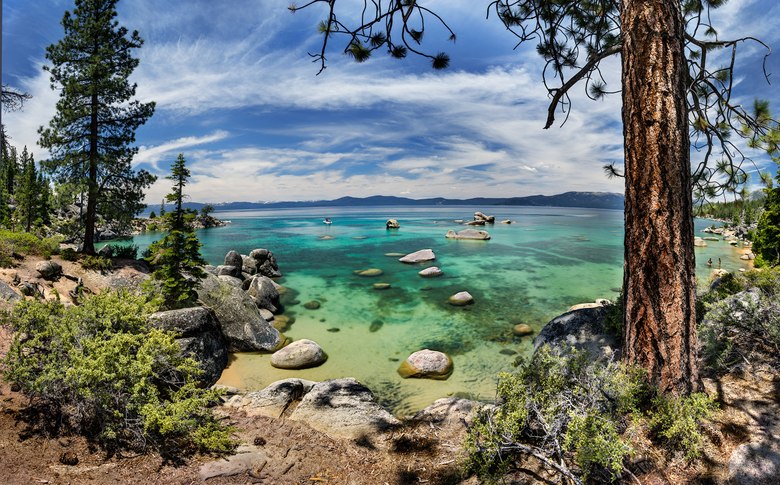Around the summer solstice, when the sun reaches its highest point in the sky, sunlight penetrates deep into Lake Tahoe, enhancing the blue hues of its depths. Even in the shallows of Whale Cove on the lake’s eastern shore, the water’s luminosity differs from other times of the year. In winter, the low sun merely skims the lake's surface. In late spring, when the sun is directly overhead, as shown in this photograph, the lake's floor appears vibrantly colored. The rounded boulders that breach the surface almost seem to float.
Whale Cove derives its name from a large boulder located to the right of center that resembles a whale emerging from the lake with its broad mouth open. To the left, a motor skiff is anchored, and swimmers dive into the clear, chilly waters from its stern. A couple of visitors linger on the warmer shore to the right, soaking up the intense sun at this elevation of 6,000 feet. Others are tucked away in the shade of overhanging ledges, enjoying a book, meditating, or engaging in idle conversation.
The landscape was shaped by the surrounding ranges that rise several thousand feet above the lake. The Sierra Nevada Range to the west and the Carson Range to the east cradle the lake. Between these two ranges, the land’s subsidence and a volcanic tongue of lava damming its northern end have allowed snowmelt to fill the basin. The lake drains through a low point as the Truckee River, which then flows into Nevada’s Great Basin and empties into Flathead Lake before evaporating into the desert air.

